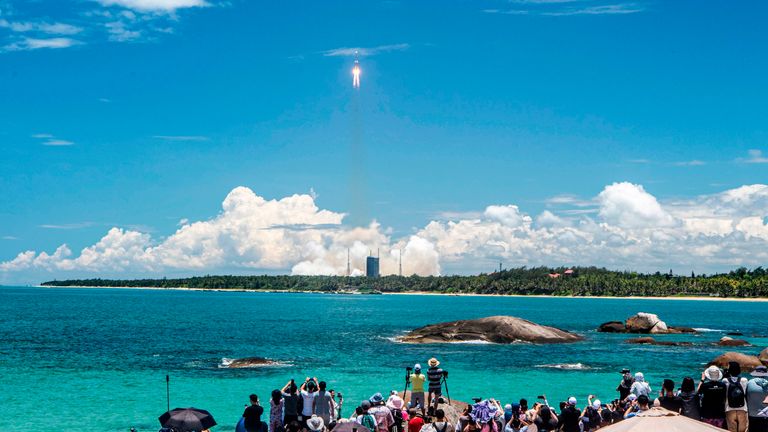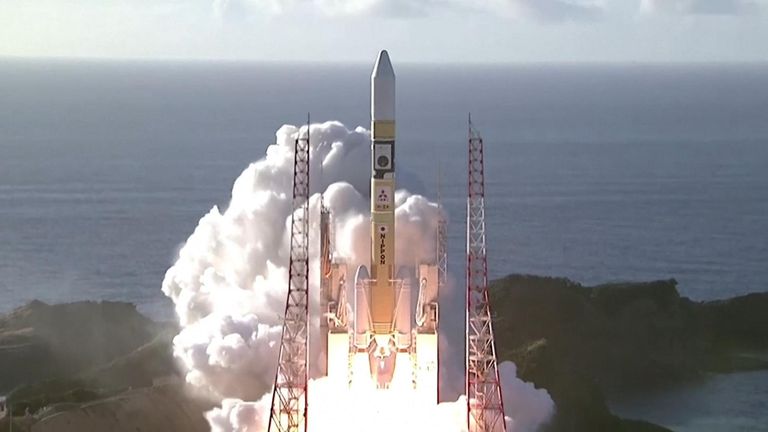China has joined the search for signs of life on the red planet by launching its own Mars rover into space.
Tianwen-1, which means “quest for heavenly truth”, took off successfully from Hainan Island off the south coast of China on Wednesday, according to state media, with hundreds of onlookers watching from a nearby beach.
It is the second country to launch a rocket to Mars this week after a United Arab Emirates spacecraft began its journey there on Monday from Japan.
The US is also set to launch a rocket to Mars from Florida’s Cape Canaveral next week.
Tianwen-1 will take seven months to reach the red planet and plans to search for underground water and evidence of possible ancient life forms.
The tandem spacecraft – with both an orbiter and a rover – is expected to enter Mars’ orbit in February and is aiming for a landing site on Utopia Planitia.
NASA detected possible signs of ice at the site, according to an article in Nature Astronomy by mission chief engineer Wan Weixing, who died in May after battling cancer.
The rover will attempt to land on Mars in April or May next year.
The 240kg solar-powered device will operate for around three months when it touches down on Mars, while the orbiter is due to last two years.
The launch is China’s second attempt at heading to Mars. A joint attempt with Russia in 2011 failed when the spacecraft took off from Kazakhstan but failed to get out of Earth’s orbit.
The Mars launching season only occurs once every 26 months, when the Earth is at its closest spot to Mars, and is often especially busy.
Only the US has successfully landed a spacecraft on Mars, doing it eight times since 1976.
Two NASA rovers called InSight and Curiosity are still in operation today.
China, however, was the first country to land a spacecraft on the far side of the moon last year.
The coronavirus pandemic made it more difficult for the Chinese scientists hoping to launch the Mars rocket as they were forced to work from home.
In March, during the height of China’s outbreak, three team members drove 12 hours between Beijing and Shanghai to deliver key instruments.




